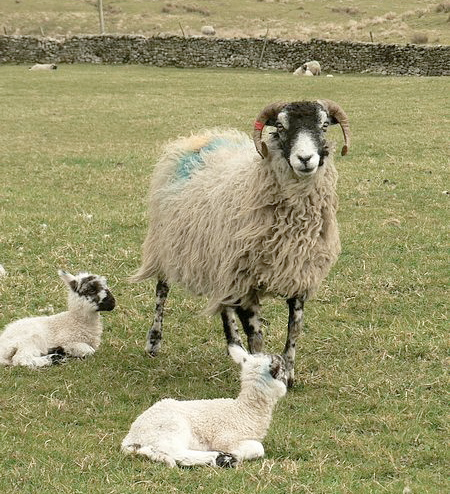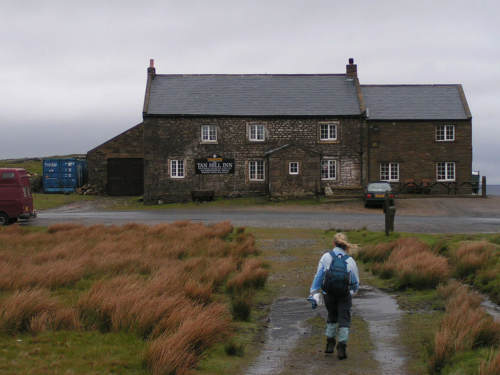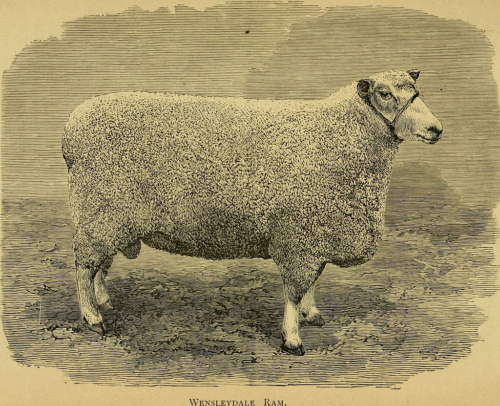
The Wensleydale is a large long wool sheep with a distinctive grey black face, ears and legs. The Wensleydale breed was developed in the 19th century by crossing English Leicester and Teeswater sheep to make a mule that developed in to the Wensleydale.
One of the largest and heaviest of all sheep breeds, the Wensleydale has long, locks of ringlet like woll inherited from its teesdale parentage.
There is a long show tradition for this breed and the 2016 winner at the 125th annual Wensleydale Longwool Sheep Breeders’ Association show and sale at Skipton Auction Mart.
‘Mr Fisher lifted the title with his first prize shearling ram and male champion, a first-rate home-bred that has excelled in the show arena all summer, becoming champion at both Otley and Ripley Shows, and runner-up in its class at the Great Yorkshire.’
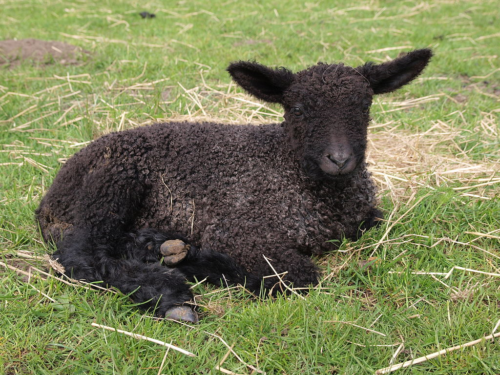
‘A separate register is maintained in the flock book for coloured Wensleydales which occur naturally as a result of a double recessive black gene (this is not exclusive to the Wensleydale). Since the coloured register was commenced in 1994 the number of black ewe lambs registered with the Association has been volatile – in 1999 there were 88 registrations but these have declined in recent years.
Some white animals carry one recessive black gene and mating two such sheep can produce coloured lambs from an apparently all white flock. These lambs are registered in the coloured register and the dam and sire must also be transferred out of the white flock. When the demand for wool was at its peak it was common for black lambs to be culled to prevent the valuable clip becoming ‘polluted’ with coloured fibres and to protect the reputation of breeders. However, these lambs born out of white flocks have now become very important as they widen the gene pool for coloured breeders – in 1999 breeding rams were registered from 13 flocks but by 2009 this had declined to 6 flocks.
Although referred to as Black Wensleydales – the colour will vary from silver to jet black.’
Swaledale Sheep Breeders Association
The Swaledale sheep is a well recognised symbol used by the Yorkshire Dales National Park. Swaledale sheep are known for their ability to thrive in exposed locations becoming hefted to the hill and do not need fences.
History
The breed are related to Scottish Blackface and Rough Fell sheep both of which are also predominant in upland locations in the United Kingdom.
Although the specific origins of the breed are unknown, an ancestor for the Swaledale was described by two noted names of the eighteenth century, John Naismyth and Charles Findlater first published in 1796. A 17th-century forerunner was the Linton breed.
The Swaledale Sheep Breeders Association was founded in 1919 and originally consisted of farmers living within a seven-mile radius of the Tan Hill Inn, on the North Yorkshire moors.
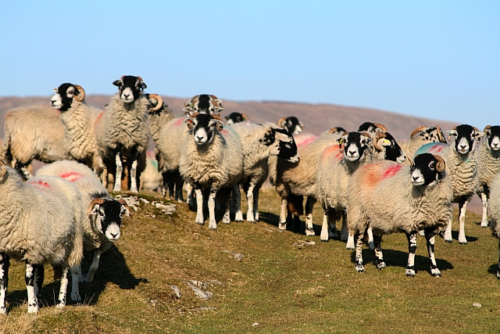
Other Yorkshire Breed Information.
Dalesbred sheep are indigenous to the upper reaches of the Dales to the Pennine Hills. Dalesbred sheep are a native breed and qualify for certain conservation schemes. They are a hill breed so are suitable for the abvailable food. The Dalesbred is prolific and is an excellent mother. She is milky and will rear twins with little problems
A commercially successful breed, the North of England Mule, has been produced from the Swaledale ewes, by mating with Bluefaced Leicesters. The offspring of this cross are now one of the most prolific lowland sheep.
Herdwick sheep are hill sheep more associated with the Lake District
The Bergschaf is a cross breed of domestic sheep from Austria but with Yorkshire roots originating in North Yorkshire early in the 19th Century.
Tan Hill Inn is situated in Swaledale, just near Keld.

